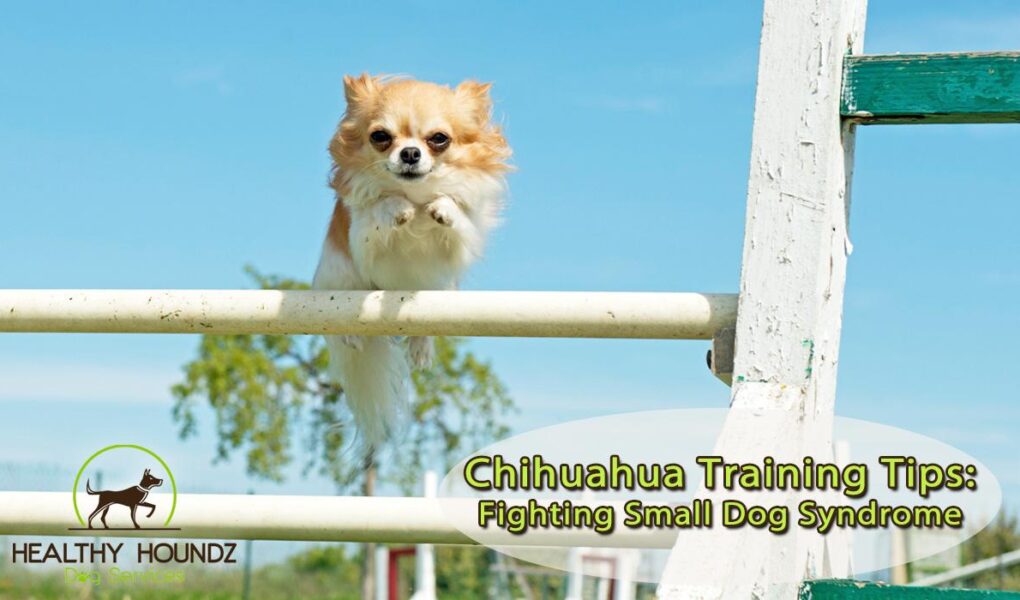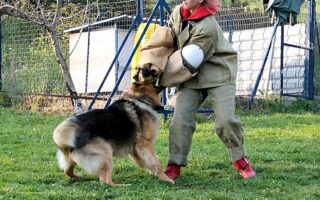Title: Mastering the Art of Chihuahua Training: Unlocking the Potential of Your Pint-Sized Pup
When you think of chihuahuas, images of tiny bundles of energy often come to mind. Despite their small stature, these spirited little dogs boast a personality as bold as their bark. However, training a chihuahua can sometimes feel like stepping into a theatrical performance, where the lead actor has a flair for drama and a penchant for mischief. From navigating their feisty nature to harnessing their intelligence, training a chihuahua requires patience, understanding, and a few creative strategies. In this article, we’ll explore essential techniques and tips to help you build a strong bond with your pint-sized companion while ensuring they grow into well-mannered and confident adults. Whether you’re a seasoned dog owner or a first-time trainer, the journey of chihuahua training is a rewarding adventure that can lead to endless joy and companionship.
Table of Contents
- Essential Techniques for Effective Chihuahua Training
- Understanding the Chihuahua Temperament for Better Results
- Positive Reinforcement Strategies That Work Wonders
- Common Challenges in Chihuahua Training and How to Overcome Them
- Q&A
- The Conclusion
Essential Techniques for Effective Chihuahua Training
Training a Chihuahua can be a rewarding experience, but it requires the right approach to harness their intelligence and spirited personality. Positive reinforcement is a cornerstone technique that has proven effective. This involves rewarding desirable behaviors with treats, praise, or play, creating a positive association for your pup. It’s essential to be consistent; using the same commands and signals helps the dog learn more effectively. Here are some strategies to keep in mind:
- Short, engaging training sessions: Keep training sessions brief (around 5-10 minutes) to maintain your dog’s interest.
- Set clear boundaries: Establish what behaviors are acceptable and which are not, using clear commands.
- Socialization: Introduce your Chihuahua to various environments, people, and other dogs to build confidence.
Another vital aspect of training is understanding your Chihuahua’s unique temperament. Some may be naturally more stubborn or shy, requiring tailored approaches to thrive. Utilizing consistent commands can prevent confusion. One useful method is to apply a training schedule, which helps in building a routine. Here’s a simple table format to demonstrate a basic training schedule:
| Day | Command/Activity | Duration |
|---|---|---|
| Monday | Sit | 10 minutes |
| Wednesday | Stay | 5 minutes |
| Friday | Recall | 10 minutes |
Understanding the Chihuahua Temperament for Better Results
Understanding the temperament of a Chihuahua is crucial for effective training. These little dogs are known for their vibrant and often fiery personalities, which can be a mix of confidence, loyalty, and a streak of independence. Their small size can sometimes lead to underestimating their need for mental challenges and socialization. A Chihuahua’s temperament can vary, often influenced by genetics, environment, and socialization. Therefore, it’s essential to recognize their distinct traits to cultivate a successful training regime tailored to their needs.
To achieve the best training outcomes, consider the following aspects of Chihuahua behavior:
- Social nature: Chihuahuas thrive on interaction. Regular socialization with other dogs and people is vital to reduce anxiety and build confidence.
- Boldness: Despite their size, Chihuahuas can be bold and territorial. Establishing boundaries early on will help maintain a well-behaved companion.
- Sensitivity: These dogs often react strongly to harsh treatment. Positive reinforcement, such as treats and praise, can lead to better engagement during training sessions.
Empowering yourself with knowledge about their temperament can pave the way for better training techniques:
| Temperament Aspect | Training Strategy |
|---|---|
| Confidence | Use low-pressure situations to build trust. |
| Independence | Incorporate fun and engaging activities to keep them interested. |
| Playfulness | Integrate playtime into training to enhance learning. |
Positive Reinforcement Strategies That Work Wonders
When it comes to training your chihuahua, utilizing positive reinforcement can significantly enhance your approach and yield impressive results. This technique focuses on rewarding desired behaviors rather than punishing misbehaviors, creating a more enjoyable learning environment for both you and your furry friend. You can incorporate a variety of rewards, including:
- Treats: Small, tasty morsels that your chihuahua loves.
- Verbal praise: Use a cheerful tone to affirm their positive actions.
- Playtime: Elevate their spirits by engaging in a fun activity.
Establishing a consistent routine is essential. Pair the rewards with specific commands or behaviors to maximize their effects. For instance, if you are teaching your chihuahua to sit, immediately follow the command with praise or a treat when they comply. Consistency and timing are key; it’s crucial to reward them right after the desired action occurs so they can connect the dots. Here’s a simple table to illustrate effective reinforcement methods:
| Behavior | Positive Reinforcement |
|---|---|
| Sitting | Treat + “Good dog!” |
| Walking without pulling | Praise + Playtime |
| Coming when called | Treat + Enthusiastic greeting |
Remember, the goal of positive reinforcement is not just to train your chihuahua but to build a loving relationship based on trust and respect. Keeping training sessions short yet engaging will maintain your pet’s enthusiasm. With time and patience, you’ll watch your chihuahua thrive in their learning journey, making each accomplishment more rewarding for both of you.
Common Challenges in Chihuahua Training and How to Overcome Them
Training a Chihuahua can be an exciting yet challenging endeavor due to their spirited nature and strong personalities. One common issue is stubbornness. Chihuahuas are known for their independence, which can make them resistant to commands. It’s crucial to approach training with patience and consistency. Using positive reinforcement techniques, like treats or praise, can help motivate them. Additionally, engaging in short, fun training sessions can keep their attention and encourage enthusiasm.
Another challenge faced by Chihuahua owners is their nervousness in new situations or with unfamiliar people. This can lead to excessive barking or timid behavior. To mitigate this, early socialization is key. Expose your Chihuahua to various environments, sounds, and people gradually. Create a structured training plan that includes the following strategies:
| Strategy | Description |
| Socialization | Introduce to different people and pets. |
| Short Sessions | Keep training sessions brief and engaging. |
| Positive Reinforcement | Reward good behavior with treats or praise. |
By implementing these approaches, you can help your Chihuahua overcome their training challenges while developing a stronger, more trusting bond with them.
Q&A
Q&A: Unlocking the Secrets of Chihuahua Training
Q1: What makes Chihuahuas unique when it comes to training?
Chihuahuas are small dogs with big personalities! Their size may be diminutive, but their eagerness and energy are noteworthy. This breed is known for its intelligence, which can be a double-edged sword; they are quick learners but can also become easily distracted or stubborn. Recognizing their spirited nature is crucial when approaching training methods tailored to their temperament.
Q2: What foundational commands should I teach my Chihuahua first?
Starting with essential commands such as “sit,” “stay,” “come,” and “leave it” is a great way to build a strong foundation. These commands not only ensure safety and good behavior but also foster a bond of trust between you and your Chihuahua. Consistency and positive reinforcement are key—think of small treats or enthusiastic praise whenever they follow through!
Q3: How can I ensure my Chihuahua stays focused during training sessions?
Chihuahuas can sometimes have short attention spans, so keeping training sessions short and engaging is paramount. Aim for 5 to 10 minutes per session and make the experience stimulating. Incorporate playtime and interactive toys to maintain their interest. Training can be a game; the more fun it is, the more likely they’ll stay engaged!
Q4: What are some common challenges I might face when training a Chihuahua?
One common challenge is their tendency to exhibit stubbornness or willfulness. If they see something more appealing—like a squirrel or a friend—they may ignore commands. Managing distractions and gradually increasing the complexity of the environment during training can help. Additionally, some Chihuahuas may have issues with socialization, so gradual exposure to new people and environments is beneficial.
Q5: How important is socialization in a Chihuahua’s training?
Socialization is incredibly important for Chihuahuas! Due to their small size, they may be more apprehensive and protective than larger breeds. Early and consistent exposure to various people, animals, and environments will help them develop confident and well-rounded personalities. Regular playdates and group training sessions can help facilitate this process.
Q6: Are there specific training techniques you recommend for Chihuahuas?
Positive reinforcement is particularly effective for training Chihuahuas. This can include treats, toys, or verbal praise. Techniques such as clicker training also work wonders, as they provide immediate feedback and help reinforce the desired behavior. Remember to adjust your approach based on your Chihuahua’s individual responses, adapting techniques as necessary!
Q7: Can I train my Chihuahua to do tricks?
Absolutely! Chihuahuas often excel in learning tricks due to their intelligence and desire to please. Once your Chihuahua has mastered basic commands, introducing fun tricks like “spin,” “roll over,” or “play dead” can be a delightful way to stimulate their mind and showcase their agility. The key is to keep it lighthearted and fun!
Q8: What’s one final piece of advice for Chihuahua owners?
Patience and consistency are your best friends in the training process. Chihuahuas are incredibly smart, but they also have a flair for independence. Celebrate small victories and maintain a positive atmosphere. Don’t forget to enjoy the journey with your feisty little companion—after all, good training lays the groundwork for a loving and loyal bond that lasts a lifetime!
The Conclusion
training a Chihuahua might initially seem like a daunting task, but with patience, consistency, and a sprinkle of creativity, it can evolve into an enriching experience for both you and your furry companion. Remember, every bark and wag is a step towards understanding your pet’s needs and personality. Whether it’s mastering basic commands or refining social skills, the journey of training strengthens the bond between you and your little friend. Embrace the quirks that make Chihuahuas unique, celebrate their victories—big and small—and enjoy the laughter they bring into your life. With the right approach, your Chihuahua will not only be well-trained but also a cherished member of your family, ready to accompany you on all of life’s adventures. Happy training!



